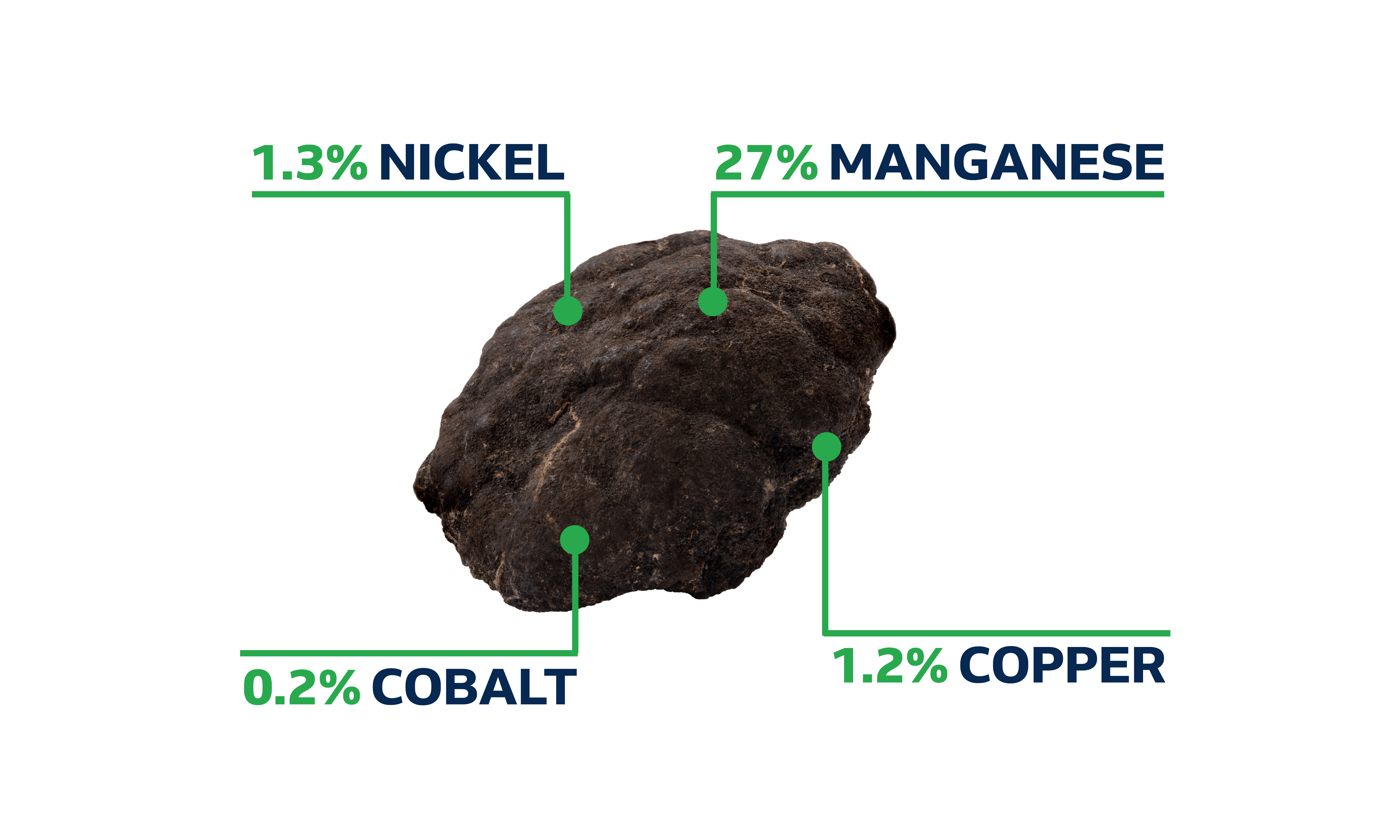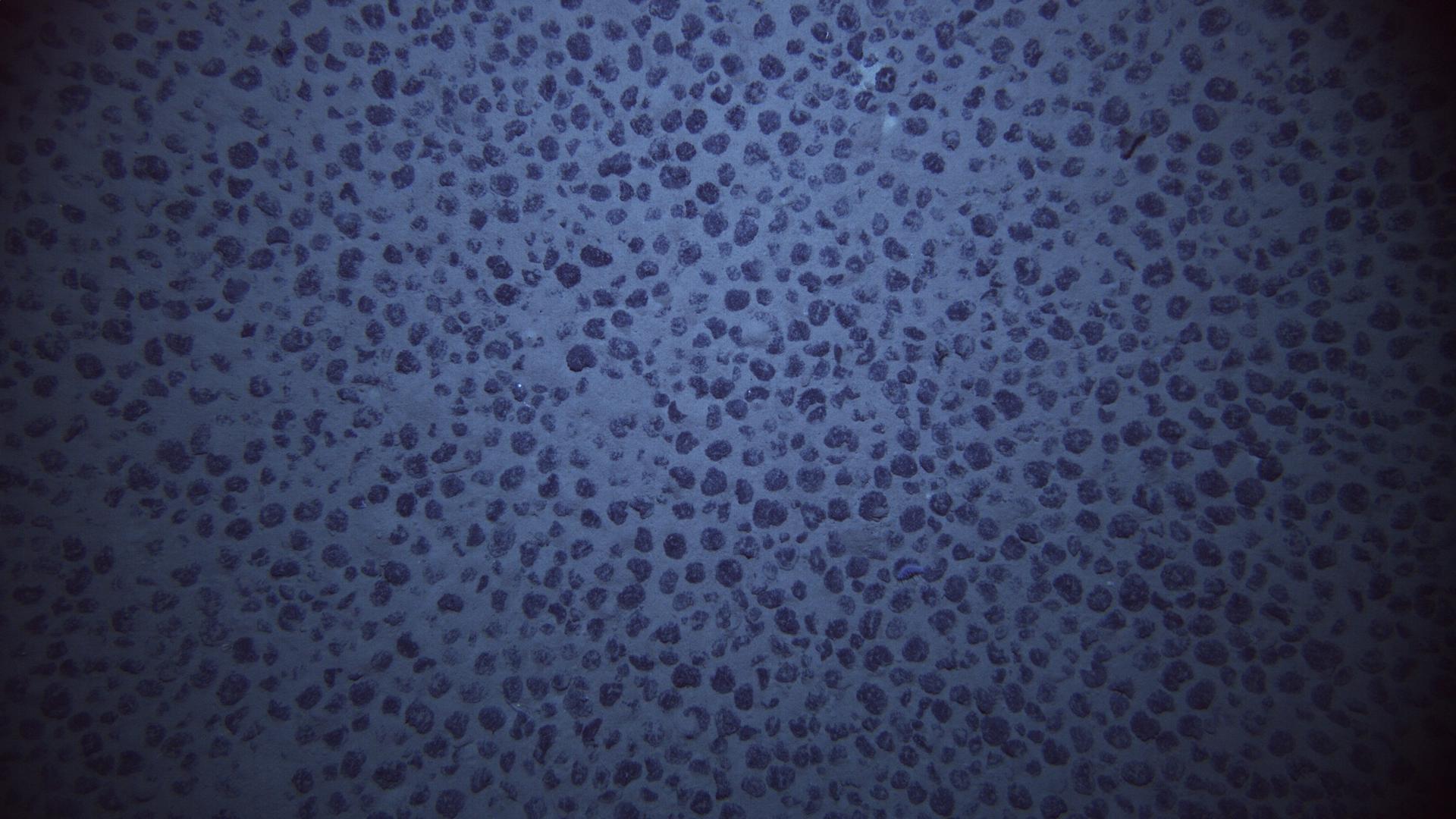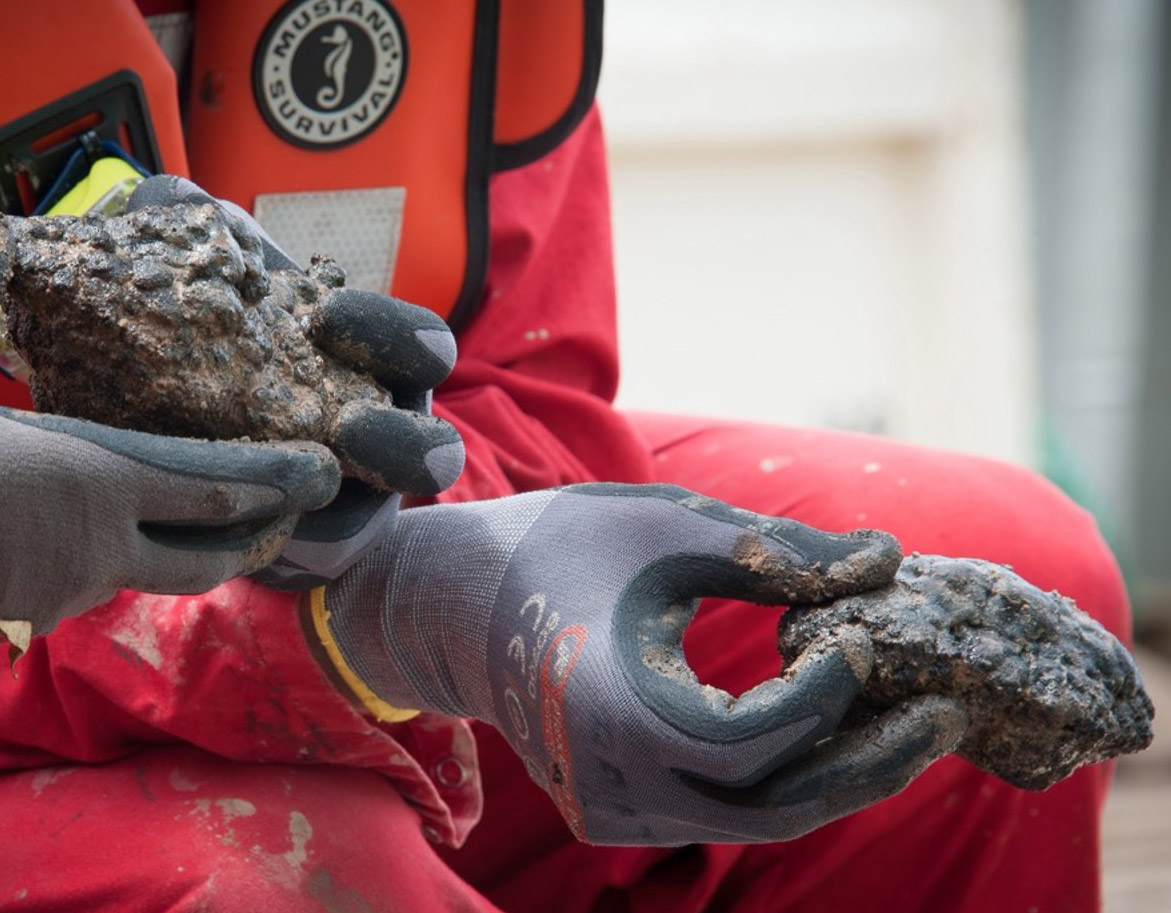
Polymetallic nodules lie on the seafloor, unattached, and can be collected without cutting or drilling.
Polymetallic nodules can be found in the abyssal plains of all major oceans at water depths between 4,000 and 6,000 m. However, they are most abundant in the Central Pacific Ocean in an area known as the Clarion Clipperton Zone (“CCZ”).
The composition and size of nodules varies slightly depending on where they are found. On average each is rich in nickel (1.3%), cobalt (0.2%), manganese (27%) and copper (1.2%) and is the size of a potato.
It is calculated that nodules in the CCZ contain more nickel, cobalt and manganese than all land-based reserves combined. These are the exact metals we need for sustainable development, growth in urban infrastructure and clean energy technologies.

For example, these metals are critical for building wind turbines, solar panels, electric vehicle batteries and other energy storage devices that we need to decarbonise our transport and energy systems.
Demand for them is significant and rising. It is estimated that the demand for nickel and cobalt will rise by one thousand percent by 2050 to satisfy the requirements of clean energy alone.
With the global population expected to reach 9.7 billion by 2050 and with an estimated 66 percent of those people living in cities, we need to build a lot more urban infrastructure in the next thirty years and to do this sustainably will require even more metal.
Humanity must quickly find new responsible sources of critical metals if we are to meet rising demand, and polymetallic nodules could be an important part of the solution.

